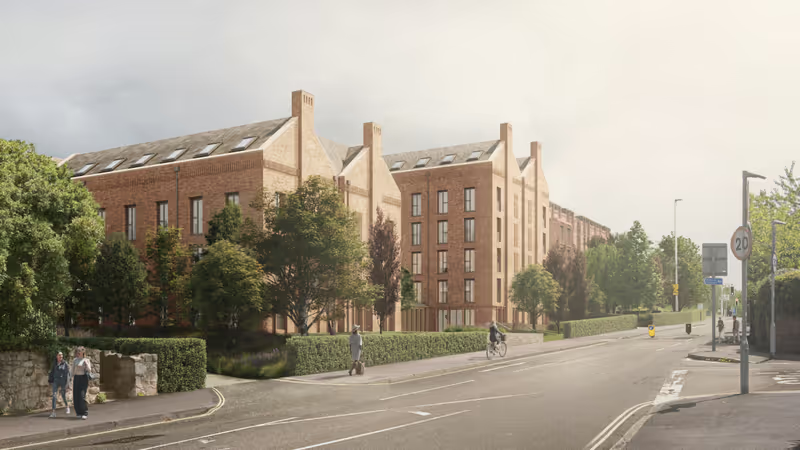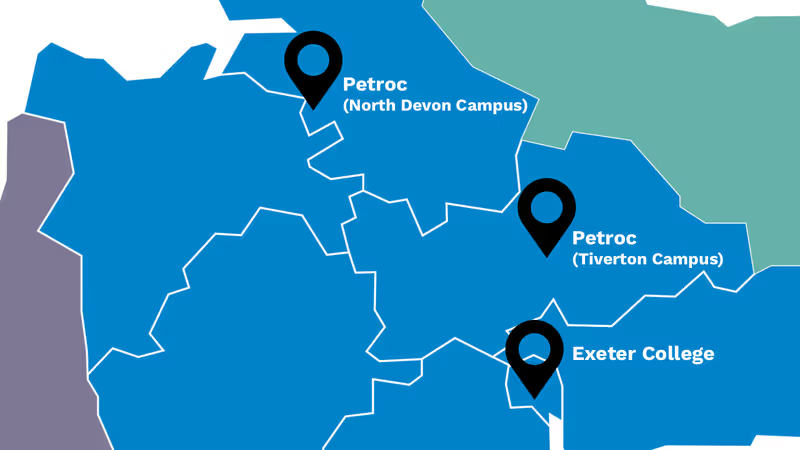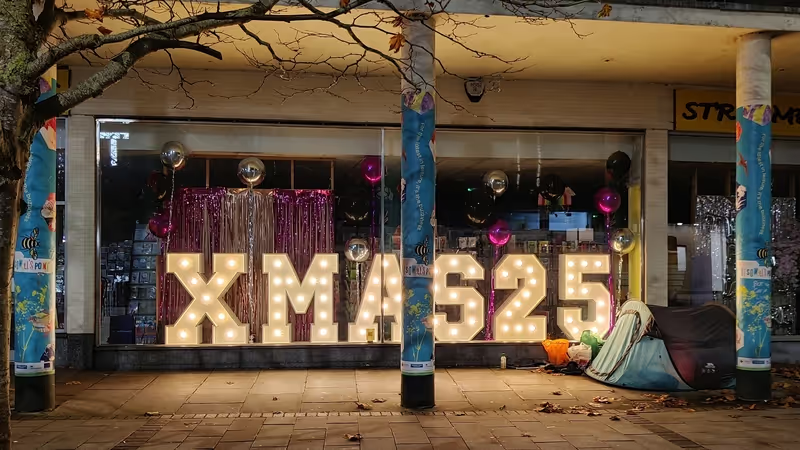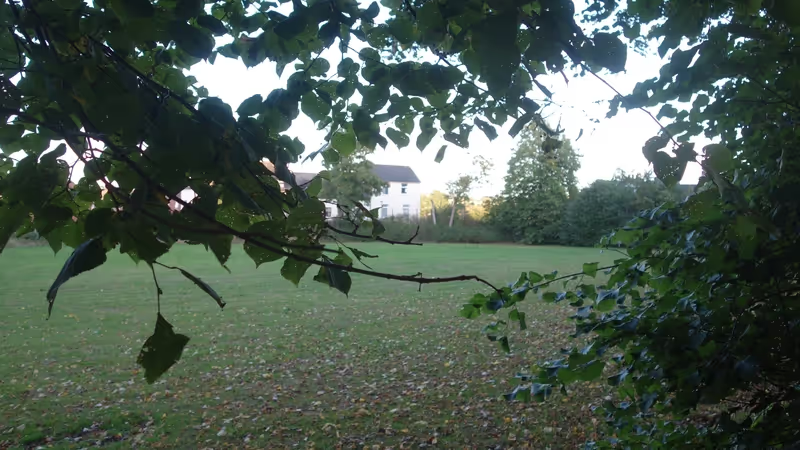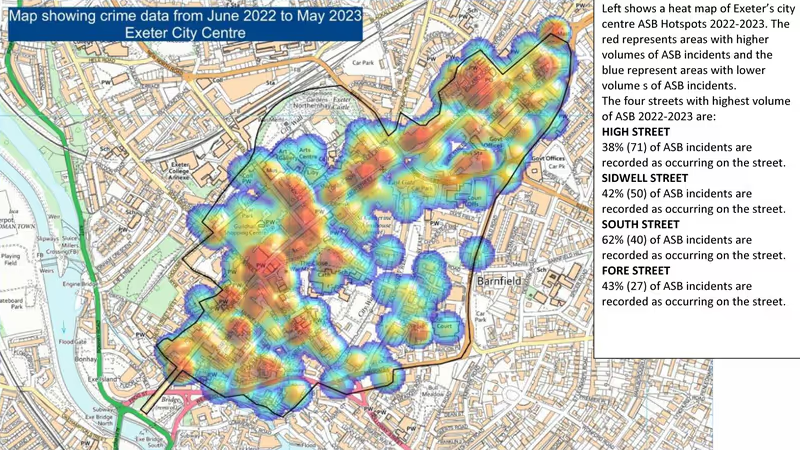Exeter City Council has dismissed concerns that too much student accommodation is having an adverse impact on community balance in approving plans for a new purpose-built block on the site of the former King Billy public house in Longbrook Street.
It approved the development plans, which prompted significant criticism from local councillors and community representatives, earlier this month following the failure of several other schemes for the site over a period of seven years, all of which it also approved.
In doing so it refused to accept university-published figures showing a decline in Exeter student numbers and denied that major challenges facing the UK higher education sector as a result of falling overseas student demand might affect the university’s prospects.
It also understated the number of dedicated student beds that are already available in Exeter, as well as those in the development pipeline, and cited its recent and as-yet-untested inclusion of student accommodation in its housing delivery figures – which makes student blocks more likely to gain planning consent – as a justification for approval.
Instead of using existing local planning policy definitions to assess the impact of the scheme on community balance it contrived criteria which restricted consideration of its impact to a 250 metre radius round the development site and relied on planning use classes which do not consider student accommodation as a distinct use of its own.
It also counted student blocks instead of the number of beds they contain to assess the impact of student accommodation on communities – which consist of people and not property – to conclude that the King Billy block would not have an adverse impact on community balance or the character of the area.
Exeter Observer analysis of the planning policy-defined city centre area found 4,684 dedicated student accommodation beds in July with another 648 in the pipeline – equating to 46% of the city centre population.
The 862 “co-living” units that are also due would make it 54%, without including the uncountable city centre flats and houses in which students live but which are not designated as student housing.
 Longbrook Street student accommodation development site before King Billy demolition
Longbrook Street student accommodation development site before King Billy demolition
The scheme approved by the council earlier this month is the third major design iteration for the 1.2 acre development site, which was formerly occupied by Shepherd’s Garage, demolished in 2007, and the King Billy public house, which was demolished in 2023 after closing five years before.
Consent for a six storey student block on the garage site was granted in 2016, then plans to build a nine storey 124-bed student block on both sites were submitted in 2017.
This first major scheme was approved in 2018 following revisions which reduced the number of bedrooms to 108. It included two large ground floor commercial units, a 97m2 retail space and an 83m2 restaurant/bar space with a mezzanine floor.
These and other changes were the result of design review panel interventions. The commercial units were considered integral to the building’s design, providing active frontage additions to the existing street scene, while the double-height windows for the two storey restaurant/bar were a key architectural feature intended to step up towards the much taller John Lewis building on one side.
Considerable emphasis was placed on the importance of these arrangements both in the application documents and at the city council planning committee meetings that discussed it.
 October 2017 original consented scheme west elevation. Image: Grainge Architects.
October 2017 original consented scheme west elevation. Image: Grainge Architects.
Three years passed without construction commencing. The council renewed the planning consent in 2021 and another year passed. It then approved a scheme reconfiguration which reduced the layout to 97 beds in 2022.
More scheme amendments were made the following year. A bin store was inserted into the street frontage at one end of the building and the two-storey restaurant/bar became a cafe. The council approved the revisions as non-material amendments to the consented scheme, taking just three days to issue a decision based on a 200-word report.
Yet more scheme variations followed, which included removing the ground floor retail unit and the upper storey of the restaurant/bar unit, halving the height of its window so the visual step up to John Lewis next door would be lost.
The council approved all the changes, which included altering the description of the scheme despite the implication that doing so accepted the use of all nine floors of the building for student accommodation. The pub was pulled down – during its demolition a protected medieval wall on the site was also demolished, without authorisation – but the block remained unbuilt.
 October 2023 consented scheme variation west elevation. Image: Jefferson Sheard Architects.
October 2023 consented scheme variation west elevation. Image: Jefferson Sheard Architects.
Earlier this year it then emerged that a new developer had taken over the site. Durham-based Rok PropCo (Exeter) Limited, controlled via a series of shell companies including off-shore entity Monet Limited, submitted a new planning application for the site in March.
Like the original 2018-approved scheme it was for a building up to nine storeys tall providing 108 student accommodation beds. Unlike the original scheme, instead of cluster flats with shared kitchens and other facilities all the beds would be provided in tiny self-contained studios.
The resulting building, the mass of which had been significantly increased to accommodate the new configuration, would now provide 3,100m2 of internal space with the ground floor largely turned over to student use. The 180m2 retail and restaurant/bar space with a two-storey mezzanine beside John Lewis had become a single-storey 73m2 cafe.
Exeter St James Community Trust said it had hoped that the new planning application might reveal “an inspirational brand new development proposal for this very important and sensitive site, not just for St James, but for the city centre”.
But it said it was “dismayed” to find a “further attempt by the applicant to keep pushing the boundaries of the originally consented application on this site”.
It described the ground floor frontage and use changes as “hugely retrograde” compared with the original design and said the plans for the building should be “dismissed as particularly unsuitable in the sensitive context of its important location”.
It also pointed out that the scale and massing of the new block would dwarf the Longbrook Street buildings it would abut, a view echoed in public objections to the scheme.
Duryard & St James ward councillor Tammy Palmer also objected, saying: “This is an important and prominent site. It could and should be developed to provide much-needed high quality homes for Exeter residents and not for purpose-built student accommodation.”
 Longbrook Street student accommodation development site – the gates would not be visible if the protected medieval wall had survived
Longbrook Street student accommodation development site – the gates would not be visible if the protected medieval wall had survived
Speaking at this month’s planning committee, which met to determine the application, Duryard & St James ward councillor Michael Mitchell expressed similar concerns.
He said the block would be overbearing and out of keeping with the surrounding buildings, and that the proposals conflicted with local plan policies intended to prevent adverse impact on community balance and neighbourhood character caused by over-concentration of student accommodation.
He questioned the accuracy and currency of the student numbers being put forward by the council following a decline in the university’s overseas cohort and challenged the assumption that more student accommodation was needed at all.
St David’s ward councillor James Banyard also said he could not support the proposals because it was clear they would increase the existing community imbalance in the area.
Council development director Ian Collinson said that not only was the block’s design acceptable, this was the right place to build it, and insisted that Exeter needs more student accommodation.
He also said that councillors could rely on council officers to properly monitor management company-delivered controls on the behaviour of the block’s occupants which he claimed would mitigate concerns about the impact of an over-concentration of student accommodation in the area.
The other committee members who were present at the meeting then voted to approve the plans.
 September 2025 permitted replacement scheme west elevation. Image: RMI Architects.
September 2025 permitted replacement scheme west elevation. Image: RMI Architects.
Dramatic changes have taken place in the UK higher education sector since the original 2018 scheme approval. It’s no stretch to infer that uncertainty about student accommodation demand is the primary cause of the delays and changes that have stalled the site.
The sector’s woes began when the number of lucrative overseas students coming to the UK started to fall, initially because of the combination of the COVID-19 pandemic and post-Brexit changes to student visa requirements and fee arrangements.
These factors led to the number of undergraduates coming from EU countries to study in the UK halving between 2020-21 and 2021-22, then falling further in the following two years to its lowest level since the sector was reorganised more than thirty years ago.
Government policy changes intended to limit the number of non-EU overseas students also contributed to falling demand. By the 2023-24 academic year many higher education providers were projecting budget deficits, partly also because domestic student fee caps were limiting their income as inflation increased their costs.
In July last year an Office for Students report concluded that the sector faced “unprecedented challenges” prompting the observation that the “golden age” of higher education was over. In September a Universities UK report said that the sector’s funding system was “unsustainable”.
In response the government announced last November that it would increase both the tuition fees cap and the student maintenance loan limit in line with inflation from April this year, so annual fees would increase by £285 and loans by £414. So far it appears to have been too little, too late.
 Cash for Courses investigation banner. Image: The Sunday Times.
Cash for Courses investigation banner. Image: The Sunday Times.
In April a UK universities redundancy tracker was set up which has since recorded more than 5,000 sector job cuts. The University and College Union said it expected another 5,000 redundancies before the end of the academic year.
In May Universities UK said that many institutions were further cutting operations by closing and consolidating courses as well as shutting entire academic departments to save money. But the following week the government published an immigration white paper which said it would introduce additional restrictions on overseas student access to UK higher education.
The full consequences of all these changes have yet to play out. The University of Exeter was caught napping in a “cash for courses” scandal in January last year after a Sunday Times investigation found that it and other Russell Group universities were accepting far lower exam grades from overseas students for entry via special pathways than they required of UK applicants.
It reopened its staff redundancy programme two months later but the job losses that followed have yet to appear in the UK-wide tracker. Figures have not been published, but between 180 and 268 staff were reported as losing their jobs in 2024 with more to follow in 2025.
Last week the university announced that it will offer five courses from next September to up to 1,200 students who will study in China but receive a degree from both the University of Exeter and Zhejiang University of Technology.
We have since been contacted by a group of postgraduate teaching assistants who say that the university has just made more cuts to seminars and student contact time after imposing reductions before the summer which have together reduced the topic coverage they deliver by 75%.

Whether the university can offset the financial impact of falling numbers of overseas students by such means is not clear.
And the student numbers it publishes on its website offer little insight into its position both because the 2024-25 figures have yet appear – even though nine months have passed since they were collected – and because it presents them as “Full-Time Equivalent” numbers.
These “FTE” student numbers are a notorious university transparency evasion tactic. They combine full-time and part-time students into a single total used for planning educational provision, although the university does not explain this anywhere on its “facts and figures” page.
What they cannot be used for is planning accommodation provision as they obscure how many people are enrolled at the university and so how many need somewhere to live while they study.
There were 11,500 more students based at Exeter campuses than shown in the published university “FTE” figures in 2021-22, the second year in which university places were oversubscribed as a result of teacher assessment-driven grade inflation following the pandemic cancellation of A-level exams.
Figures we also obtained under freedom of information legislation confirmed that the university had consistently and significantly understated its true student numbers over more than twenty years. And they showed that the numbers of students of all types based at Exeter campuses began to fall after a 2021-22 peak.
It has since resisted further freedom of information requests for true student numbers in 2023-24 and 2024-25. The Information Commissioner has just concluded an investigation into its disclosure evasions by ordering it to provide the information we have asked for, but it has thirty days to comply and may yet defy the order and risk contempt of court to avoid its publication.
In the meantime all we have are the figures it has published, which show that Exeter-based “FTE” student numbers fell by 80 in 2022-23 from a peak in 2021-22, then again by 302 in 2023-24.

The limitations of these numbers (and the lack of those covering 2024-25) did not deter the consultants commissioned by the current King Billy student block developers from relying on them to produce an Exeter student accommodation need assessment.
Their report, which was submitted in August as part of the development application, says that “student demand at the University of Exeter remains strong” and that “both undergraduate and postgraduate cohorts have grown, driven by international growth”.
The council report to this month’s decision-making planning committee meeting also falls foul of the same “FTE” numbers limitations. It not only reproduces errors caused by relying on these numbers made in a December 2024 Student Housing Needs Assessment which forms part of the evidence base for the new Exeter Local Plan, it also ignores the three years since the 2021-22 peak.
The consultants that produced the assessment at least acknowledge the challenges facing UK higher education. They admit that “there is great uncertainty around the future of the university sector, with many universities announcing departmental closures and redundancies”.
But they nevertheless cite another housing needs assessment they also produced for the council last year to conclude that the Exeter student numbers growth rate in the ten years from 2008 to 2018 will continue into the future, and could even increase further.
The council report to the planning committee relies on this “evidence” to identify “a continued increase in the student population and therefore an associated need to provide suitable housing” for the “growing numbers at the university that must be accommodated within the city.”
It denies that Exeter student numbers have fallen and brushes aside the sector’s woes, including concerns raised in public consultation such as competitive challenges to the prestige of UK universities in an increasingly global higher education market for international students.
 Exeter dedicated student accommodation map, omitting several blocks. Source: University of Exeter.
Exeter dedicated student accommodation map, omitting several blocks. Source: University of Exeter.
So much for evidence of continuing growth in Exeter student numbers. What about the number of dedicated student accommodation beds in the city that are intended to supply the demand for term-time accommodation they drive?
Unsurprisingly, the council and the consultants commissioned by the King Billy developers also differ on this. As does another firm of consultants commissioned by developers proposing a new student block to replace Clarendon House.
Their report, dated July, says Exeter then provided a total of 12,289 dedicated student beds with a pipeline of 2,587 more of which 498 already had planning permission. It also says that the “core demand for student accommodation is estimated at 15,580 beds”.
That’s 704 more than its post-pipeline total of 14,876 beds would provide, leaving plenty of headroom for the additional beds proposed at Clarendon House by their clients.
The King Billy consultants played it safer by leaving even more headroom. Their report only found 11,437 dedicated student beds in Exeter with a pipeline of “just 1,942 beds across three schemes as of June 2025”.
On their account, all but 108 of these pipeline beds were in schemes that had already acquired planning consent. They didn’t identify the “core demand” for such accommodation in Exeter, but were in no doubt about the “need for new schemes” – such as the King Billy block.
The council’s planning team is responsible for local planning policy, decision-making and enforcement, so should know how many dedicated student beds the city provides as well as how many are in the pipeline and how many of those already have consent.
Its report to the September committee meeting says that its “latest calculations” found 12,908 dedicated student beds in Exeter with another 1,664 which already had planning consent: a total of 14,572. It does not include pipeline figures for student beds which had not yet been approved.
Exeter student accommodation beds
| Name (* = city centre) | July 2025 | Consented | Pending |
|---|---|---|---|
| 48onNewNorth* | 29 | ||
| 36, 37 & 38 High Street* | 24 | ||
| 74 Queen Street* | 10 | ||
| Apollo House* | 33 | ||
| Artful Dodger House* | 35 | ||
| Atlas House | 73 | ||
| Beaufort House* | 107 | ||
| Birks Grange (Blocks A-E) | 360 | 290 | |
| Birks Grange Village (Blocks F-Q) | 832 | ||
| Bishop Blackhall School | 113 | ||
| Blockyard | 15 | ||
| Bonhay House* | 31 | ||
| Boutique Student Living | 74 | ||
| Central Living* | 123 | ||
| City Arcade* | 64 | ||
| Clarendon House* | 297 | ||
| Clifford House | 312 | ||
| Clifton Place* | 150 | ||
| Clydesdale Court | 16 | 0 | |
| Clydesdale Rise | 108 | 0 | |
| Coldridge House* | 10 | ||
| Cook Mews | 40 | ||
| Cricket Field Court | 159 | ||
| Dean Clarke Lofts* | 60 | ||
| Duryard Halls | 194 | ||
| East Park | 1,182 | ||
| Exeter One | 219 | ||
| Garden Hill House | 20 | ||
| George House* | 37 | ||
| Hill View Place | 188 | ||
| Holland Hall | 406 | ||
| Holland Hall Studios | 16 | ||
| Hoopern Mews | 45 | ||
| Hope Court & The Wall House | 56 | ||
| Howell Road | 26 | ||
| INTO Duryard | 517 | ||
| Iron Bridge Studios* | 130 | ||
| Isca Lofts* | 71 | ||
| James Owen Court | 275 | ||
| Johnson's Laundry | 350 | ||
| Kilmorie | 70 | ||
| Kilmorie Mews | 26 | ||
| King Billy* | 108 | ||
| King Edward Court | 8 | ||
| King Edward Studios | 64 | ||
| Lafrowda | 1,257 | ||
| Lafrowda Cottage | 5 | ||
| Library Lofts* | 44 | ||
| Llewellyn Mews | 40 | ||
| Lopes Hall | 89 | ||
| Mardon Hall | 106 | ||
| Mesopotamia* | 27 | ||
| Moberly | 251 | ||
| Molly Hayes Apartments* | 46 | ||
| Nancherrow | 14 | ||
| Nash Grove | 93 | 0 | |
| New Bridge Street basements* | 9 | ||
| New North Road* | 12 | ||
| Northernhay House* | 218 | ||
| Pennsylvania Court | 177 | ||
| Picturehouse Apartments* | 96 | ||
| Point Exe* | 241 | ||
| Police station & magistrates court | 399 | ||
| Portland House* | 156 | ||
| Queen Street Studios* | 137 | ||
| Quintana Gate* | 160 | ||
| Ransom Pickard | 86 | ||
| Renslade House* | 268 | ||
| Rowancroft | 219 | ||
| Rowancroft Court | 48 | ||
| Rowancroft House | 17 | ||
| Rowancroft Mews | 70 | ||
| Rowe House | 139 | ||
| Spreytonway | 131 | ||
| St David's* | 203 | ||
| St German's | 144 | ||
| The Barn* | 150 | ||
| The Depot* | 734 | ||
| The Kingfisher* | 203 | ||
| The Leat* | 27 | ||
| The Northfield* | 190 | ||
| The Printworks* | 487 | ||
| The Red House* | 12 | ||
| Thornton Court | 42 | ||
| Trust House | 124 | ||
| Unit 1* | 180 | ||
| Verney Street Studios* | 29 | ||
| Walnut Gardens* | 166 | ||
| Water Lane (South) | 320 | ||
| West Gate* | 98 | ||
| West Park | 1,722 | ||
| William Tarrant House | 12 | ||
| TOTALS | 13,016 | 15,318 | 876 |
Exeter Observer analysis instead found that 13,016 beds were in available for use in the 2024-25 academic year, a total which fell to 12,439 in August when the university closed five blocks in Birks Grange and all its Clydesdale Court, Clydesdale Rise and Nash Grove accommodation.
The Birks Grange blocks are being reconfigured and will provide 70 fewer beds when they reopen. Clydesdale Court, Clydesdale Rise and Nash Grove are all being demolished to make way for the first eight blocks to be built as part of the university’s new West Park complex.
Partly because of West Park’s enormous scale, we found that the dedicated student accommodation pipeline following their closure came to 2,879 beds with planning approval – 1,215 more than the figure in the council report – and another 876 in various pre-application stages.
That’s a prospective total of 16,194 student beds – 614 more than the Exeter “core demand” figure estimated by the Clarendon House consultants.
When “co-living” units are added to the equation, the prospective student accommodation supply looks even more prodigious. While only 133 units have already been built, Exeter’s existing pipeline is set to add another 1,460 such units to the mix.
So that’s a total of 17,787 such beds on their way, with the council welcoming “co-living” and new student blocks with open arms, according to a source close to the matter.
Exeter “co-living” units
| Name (* = city centre) | July 2025 | Consented | Pending |
|---|---|---|---|
| Exeland House* | 34 | ||
| Harlequins* | 383 | ||
| Haven Banks | 184 | ||
| Mary Arches Street car parks* | 300 | ||
| Police station & magistrates court | 414 | ||
| Summerland Street* | 145 | ||
| The Gorge | 133 | ||
| TOTALS | 133 | 712 | 748 |
Why might the council insist that the university’s student numbers continue to grow despite the sector’s prospects – and the data – while understating the number of dedicated student beds?
One answer is its new and as-yet-untested claim that it can count student accommodation in its housing delivery figures.
It has been unable to count student accommodation towards government-set housing delivery targets since it unsuccessfully challenged a planning inspector’s decision to grant consent at appeal for 120 dwellings in Pinhoe in the High Court in 2015.
In allowing the appeal the inspector rejected the council’s attempt, which followed an update to national planning policy in 2014, to include student accommodation in its housing delivery figures.
She did so because there was no evidence to show that student accommodation had released existing housing from student occupation for residential use, the basis on which the new policy said it could be counted.
The High Court judge said the inspector had been correct in taking this approach, adding that the council had simply relied on the new policy, without first supplying evidence, to make its case.
However in May this year, when the council updated its Five Year Housing Land Supply Statement – which sets out its view of whether it has identified sufficient development land in the city to meet government-set housing delivery targets over the following five years – it claimed it could now count student accommodation this way.
It said this was because the policy was updated in 2019 to enable the inclusion of student accommodation in housing delivery calculations provided the amount of residential stock in student occupation remained unchanged – a lower bar than the previous policy requirement that new student blocks release student-occupied housing to residential use.
It also said this was one of “two significant changes in circumstance” which meant it could now count student accommodation this way. The other, it said, was the way it calculated the housing delivery target with which the supply of identified development land is compared.
The council has updated its land supply statement several times since the 2019 policy wording change, but its May 2025 statement is the first in which it has made these claims.
In the six such statements it produced from September 2021 to May 2024 it only said that it “may now be reasonable” for it to count student accommodation this way. But in each statement it said that it did not do so because of the High Court ruling. And the way it calculated its housing delivery target also did not change.
It appears it is again simply relying on a new policy, again without supplying the evidence required – that Exeter student accommodation has reached equilibrium and supply is matching demand – to cite national planning policy this way.

Why might the council take the risk of trying to include student accommodation in its housing supply calculations after what happened in 2015 and again without evidence to support its case? Why would it do so now having not in the six years since the policy wording was changed in 2019?
During those years it lost several major planning appeals on greenfield land which it had intended to protect because its insufficient five year housing land supply meant local plan policies, such as those intended to protect Exeter’s landscape setting, carried less weight.
The “presumption in favour of sustainable development” which applied in these cases also applies in every residential planning application that the council decides, as well as every appeal brought by developers against its decisions, unless it can show the city has a viable five year housing land supply.
What is remarkable about the council’s change of course in now claiming that it can include student accommodation in its housing figures is that it could have done so nearly six years ago after the national policy update, on exactly the same basis it is doing now, to bolster its position in these greenfield appeal cases – but it did not.
The council is also required to evidence a five year housing land supply when proposing new strategic planning policies.
Did it include student accommodation in its housing supply calculations in May in the hope that the new local plan, then scheduled for submission to the planning inspectorate in June, would stand a better chance of adoption?
Whatever the reason, its belated inclusion offers no more protection against the presumption in favour of sustainable development than its exclusion: the council cannot evidence a five year housing land supply either way. But its inclusion does mean that student blocks are more likely to gain planning consent.
On both counts the provisions of local plan policies intended to protect the city are weakened. But they are not removed from the decision-making equation altogether.
 September 2025 permitted replacement scheme view from Longbrook Street, apparently angled to prevent adjacent building height comparisons. Image: RMI Architects.
September 2025 permitted replacement scheme view from Longbrook Street, apparently angled to prevent adjacent building height comparisons. Image: RMI Architects.
One such local plan policy, H5, says that student housing proposals should only be approved if they do not create “an over-concentration of the use in any one area of the city which would change the character of the neighbourhood or create an imbalance in the local community”.
As Michael Mitchell said at this month’s planning committee meeting, this policy was key to the King Billy application. The council argued, however, that the policy does not define the meanings of “over-concentration”, “area of the city” or “imbalance in the local community”.
To support its argument, the council cited a controversial appeal decision which granted consent for a student accommodation development in Howell Road last year.
In that case the planning inspector concluded that neither the presence of four student blocks within 250 metres of the development site, nor two within 150 metres, would constitute an over-concentration – assessment criteria apparently proposed by the council itself.
The inspector did not explain how they had arrived at this conclusion, other than saying that the H5 policy wording is “clear that it relates to an over-concentration of the use in any one area rather than an over-concentration of students or other occupiers”. They did not go into details on this, either.
The inspector also said they had not been provided with any information – by the council – about “the number of PBSA covering other areas, or within the St James ward area” and so could not derive any conclusions about over-concentration in the ward or anywhere else in the city.
 September 2025 permitted replacement scheme view from Bailey Street, apparently framed to prevent Longbrook Street building height comparisons. Image: RMI Architects.
September 2025 permitted replacement scheme view from Bailey Street, apparently framed to prevent Longbrook Street building height comparisons. Image: RMI Architects.
Instead of passing over the planning inspector’s assertions as of scant value in considering the King Billy decision, or reminding committee members that planning inspectors no more create local planning policy in making appeal decisions than council officers do in writing committee reports, the council took the same approach and ran with it.
Its report said “a broad exercise has been undertaken” to “consider over-concentration and imbalance”. It continued: “A circle was drawn with a radius of 250 metres from the centre of the [King Billy] site and the use of each property identified”. It said it found seven student blocks within 250 metres, of which five are within 150 metres.
It didn’t say how many residential dwellings, retail units or instances of other planning use classes – the basis for this approach – were identified in either of these radius-defined areas.
Nor did it say that half its 250 metre circle is comprised of Northernhay and Rougement Gardens, premium High Street real estate including Princesshay shopping centre and parts of Southernhay.
It also did not explain how purpose built student accommodation, which is excluded from planning use class designation as “sui generis” and lumped together with scrap yards, betting shops and petrol stations, among dozens of other uses, could be considered in planning decision-making as a distinct use of its own – or its “concentration” thereby assessed.
Even letting all these omissions pass, it is clear that simply counting student blocks instead of beds – when the number of students housed in dedicated Exeter student accommodation buildings varies from 5 to 1,257 – is of little use in assessing imbalance in local communities – which consist of people and not property.
Instead the policy, if it is to have any meaning at all, surely qualifies the threshold at which an “over-concentration” is reached itself, by stipulating that this threshold is passed when student accommodation changes the character of a neighbourhood or creates a community imbalance.
 Current Exeter Local Plan city centre boundary map. Image: Exeter City Council.
Current Exeter Local Plan city centre boundary map. Image: Exeter City Council.
Counting the number of student beds instead of blocks, we found 581 within 150 metres and 821 within 250 metres of the King Billy site, with another 27 consented but not completed.
There are 1,675 student beds within 300 metres of the King Billy site. And within 500 metres there are more than 3,000, with another 530 in the pipeline and another 528 “co-living” units on their way.
That’s a total of more than 4,000 such beds within 500 metres of the King Billy site, where another 108 beds are now set to be added to the tally.
But, as the council report says, “area of the city” is not defined in policy H5. Nor is it defined anywhere in local planning policy, on the council’s radius basis or otherwise.
What the council report also repeatedly says is that several existing local plan policies – as well as the new local plan – all identify the city centre as a preferred location for student accommodation.
It is emphatic on this point: “It is clearly demonstrated in policy and guidance that the city centre is a preferred location for PBSA and a significant level of them should therefore be expected in this area.”
It concludes, therefore, “that there is no demonstrable imbalance or over-concentration of PBSA within this part of the city”.
Which part of the city? One “area of the city” which the local plan does precisely define – with both the adopted local plan and the proposed new local plan agreeing on the matter – is the city centre.
 New Exeter Local Plan city centre boundary map. Image: Exeter City Council.
New Exeter Local Plan city centre boundary map. Image: Exeter City Council.
The local plan evidence base also provides a figure for the population of the area it defines this way – 11,300 – and so a means of reliably quantifying the proportion of the student population there – at least the proportion of students who live in dedicated student accommodation.
In July this year there were 4,684 dedicated student accommodation beds in the city centre, so students living in dedicated student accommodation then comprised 41% of its population.
There are another 171 consented and 477 more student beds in the development pipeline, which will bring the total to 5,332 – 46% of the city centre population. The 862 “co-living” units that are also due would make it 54% – unless we are to accept the council’s protestations that “co-living” is not for students at all but, instead, “homes for the people of Exeter” as council leader Phil Bialyk likes to say.
Then there are the uncountable city centre flats and houses in which students live but which are not designated as student accommodation.
Most of these are not identifiable as student-occupied because, as the ONS says, council tax records cannot be relied on for this purpose. And there is otherwise no way of knowing who is living in city centre HMOs, most of which are in any case not on the council’s radar as their size means they fall below licensing thresholds. Some students may well be sole occupiers, too.
What we can be sure of, in the absence of reliable data, is that the number of students living in Exeter city centre in buildings which are not designated as student accommodation is considerably more than none at all.
Fewer than 1,000 such students would mean there are already more students living in the city centre than residents. When the current student accommodation pipeline is complete there would only need to be 300 such students to reach this threshold – and that’s only a third of the city centre “co-living” units that are on their way.
Is anyone in any doubt that existing levels of student accommodation have already changed the character of the city centre and created a community imbalance there? If so, local plan policy H5 says this constitutes an over-concentration, and planning applications to build student blocks there should be refused.
But the members of the council’s planning committee were not invited to arrive at this conclusion earlier this month by Ian Collinson or his team. Nor, despite everything, are they ever likely to be.


